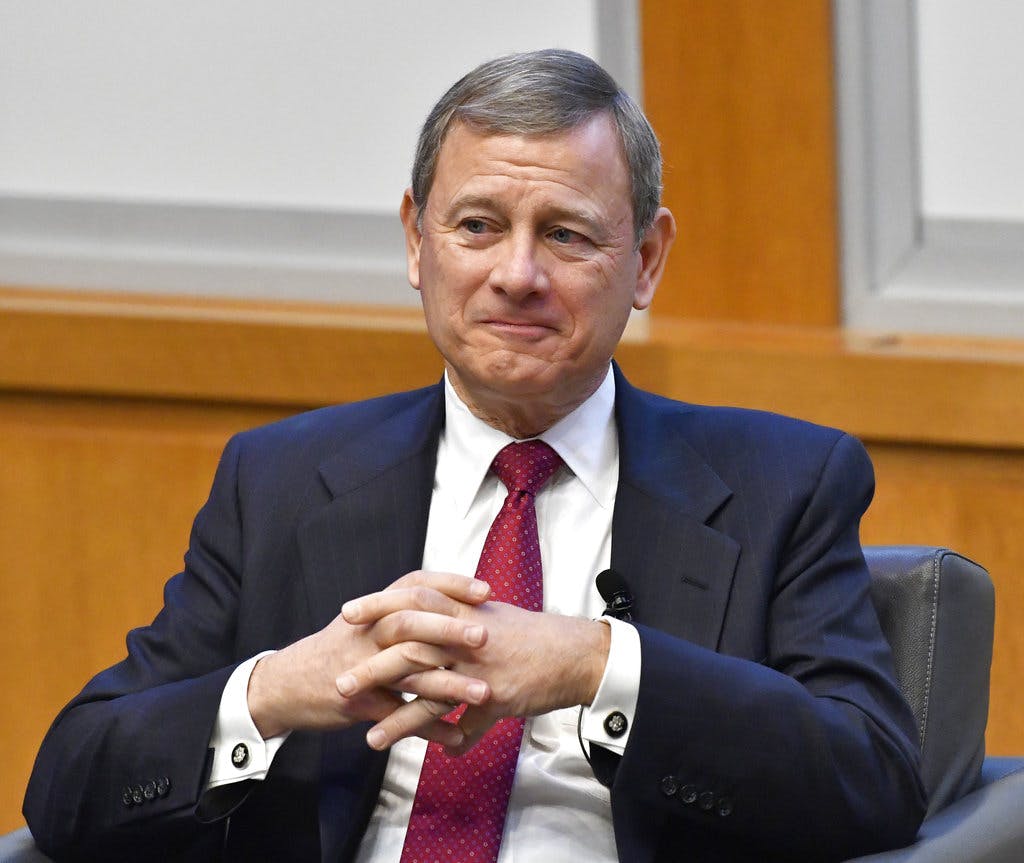Invitation to a Hanging
Chairman Durbin’s invitation to the Chief Justice to testify before the Judiciary Committee is a proposal whose time has not yet — and may never — come.

The invitation — summoning could be the better word — of the Chief Justice of the United States by the chairman of the Judiciary Committee, Senator Durbin, strikes us as a proposal whose time has not yet — and may never — come. The Illinois Democrat wants him to show up in the busiest weeks of the term for a hearing on “ethical rules that govern the Justices of the Supreme Court and potential reforms to those rules.”
Tumbleweeds are in order. Mr. Durbin’s invitation, issued in the form of a public letter, cites the “Court’s decades-long failure” to address the problem — he alleges — of justices “falling short of the ethical standards expected of other federal judges.” He opines that the “status quo is no longer sustainable.” He detects a “crisis of public confidence” in the high court, an erosion that he ascribes to a “steady stream” of disclosures of justices behaving badly.
By “behaving badly” we take to mean voting to reverse Roe v. Wade, though Mr. Durbin’s invitation comes on the heels of ProPublica’s effort to make a scandal out of the friendship that has obtained for years between Justice Clarence Thomas and the real estate tycoon Harlan Crow. A “political hit job,” Mr. Crow calls it. Congresswoman Alexandra Ocasio-Cortez has floated impeachment. The Democrats are gearing up for a fight.
The Democrats hardly needed ProPublica to justify their antipathy toward the court. Senator Schumer promised that it would “reap the whirlwind” for its abortion jurisprudence, and this was before Dobbs v. Jackson Women’s Health Organization came down. Senator Whitehouse insists that “there are good reasons Americans are losing confidence in their Supreme Court,” alluding to forces trying to “rig the judiciary in their favor.”
President Biden lamented that Dobbs was the “culmination of a deliberate effort over decades to upset the balance of our law” and the “realization of an extreme ideology and a tragic error by the Supreme Court.” A poll conducted over the summer found that more than half of Democrats wanted to abolish the Supreme Court in favor of a “democratically elected court.” The rank and file are taking their cues from the top.
We can see little upside in an appearance by the Chief Justice before Mr. Durbin’s committee. Certainly not on the terms Mr. Durbin suggests. Congress itself, Gallup finds, has a much lower approval rating with the public than the Supreme Court does — a year ago, the percentage who repose a “great deal” of trust and confidence in the Supreme Court came in at three and a half times that of the Congress. Maybe Mr. Durbin should focus on his own branch.
It is not unheard of, in any event, for one of the Nine to appear before Congress. There’s no doubt a reason, though, that, as Mr. Durbin notes, the last time the Judiciary Committee heard from a sitting justice was 2011. It’s wrong, in any event, for the Senate to suggest that Supreme Court justice be held to the same rules as lower judges. It is easy for a lower court judge to recuse himself — there are hundreds who can fill in.
In the case of the Supreme Court, it is nigh impossible for a judge to recuse himself without risk of impacting how the court might vote. That’s why Chief Justice Rehnquist made such a megillah of what he called a “duty to sit.” The recusal of just one high court justice can hang up the highest court in the land, and opens itself to great numbers of recusal requests just for that purpose. This is why fellow justices can’t vote among themselves on recusal.
Senator Durbin offers the Chief the chance to send another justice the hearing. If we were Chief Justice Roberts, we might have the instinct to ask Justice Thomas himself if he wanted the chance to confront his accusers, save for the fact that it would interfere with his judging. And it would run the risk of subjecting one of the greatest legal minds on the high bench to another attempt at what he famously, if figuratively, called a “high-tech lynching.”

